For Danielle Channell, theater’s a group effort
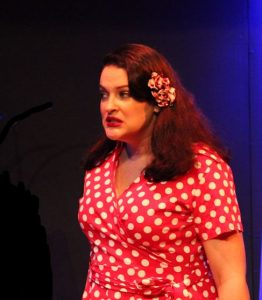 Every actor, director, theater owner and theater-goer is reacting to the ongoing moratorium on live performances differently. Some (like Florida Rep, Lab Theater, Broadway Palm, The Naples Players and Rachel Burttram and Brendan Powers through their Tiny_Theatre initiative) have rushed to fill the void with virtual readings and performances. Others are not only plugging into this brave new virtual world, but buoying each other’s spirits through social media interaction. Others are using the down time to catch up on chores oft-neglected because of busy rehearsal and performance schedules. But all are embracing the opportunity to evaluate
Every actor, director, theater owner and theater-goer is reacting to the ongoing moratorium on live performances differently. Some (like Florida Rep, Lab Theater, Broadway Palm, The Naples Players and Rachel Burttram and Brendan Powers through their Tiny_Theatre initiative) have rushed to fill the void with virtual readings and performances. Others are not only plugging into this brave new virtual world, but buoying each other’s spirits through social media interaction. Others are using the down time to catch up on chores oft-neglected because of busy rehearsal and performance schedules. But all are embracing the opportunity to evaluate 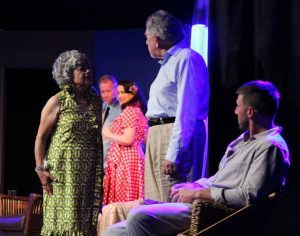 what it is that they love about theater and miss most now that the stage has been eliminated from the equation.
what it is that they love about theater and miss most now that the stage has been eliminated from the equation.
When rumors of a new pandemic first emerged in January, Danielle Channell was in rehearsals for The Studio Players’ production of Cat on a Hot Tin Roof. The threat barely registered because, quite frankly, she was being blown away on a daily basis by cast mates Kevin Hendricks, 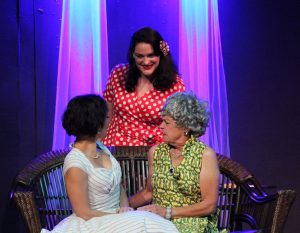 Vic Caroli, Rachel Borwein, Nancy Scanlan and Matt Flynn.
Vic Caroli, Rachel Borwein, Nancy Scanlan and Matt Flynn.
“The first time I’d ever seen Kevin Hendricks on stage was when he played Pale in Burn This,” Danielle recounts. “He’s one of those actors who when he’s delivering lines on stage, the whole world stops. The same was true of Vic Caroli during rehearsals for Cat on a Hot Tin Roof. That’s how you know you’re in the presence of greatness.”
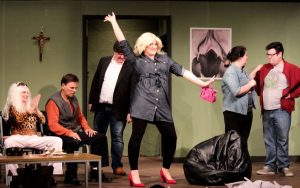 Cat on a Hot Tin Roof opened February 7 and completed its 4-week run with a 3:00 p.m. matinee on March 1 – a scant 11 days before New York Governor Andrew Cuomo closed Broadway theaters (canceling or postponing 31 shows). Within days, Southwest Florida theaters followed suit. New Phoenix Theatre’s Brenda Kensler made the tough decision
Cat on a Hot Tin Roof opened February 7 and completed its 4-week run with a 3:00 p.m. matinee on March 1 – a scant 11 days before New York Governor Andrew Cuomo closed Broadway theaters (canceling or postponing 31 shows). Within days, Southwest Florida theaters followed suit. New Phoenix Theatre’s Brenda Kensler made the tough decision 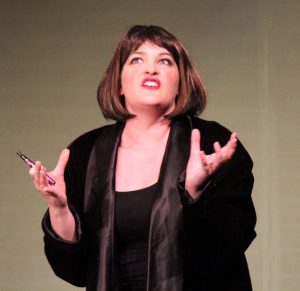 an hour before the March 15 matinee to cancel the final weekend of The Full Monty. Across town at Lab Theater, Annette Trossbach told Director Carmen Crussard and her large In the Heights cast and crew that she was shuttering the building effective March 16. The following day, TNP suspended Bye Bye Birdie. By that weekend, Florida Rep, Broadway Palm, The Players Circle and Theatre Conspiracy at the Alliance for the Arts had also closed their doors.
an hour before the March 15 matinee to cancel the final weekend of The Full Monty. Across town at Lab Theater, Annette Trossbach told Director Carmen Crussard and her large In the Heights cast and crew that she was shuttering the building effective March 16. The following day, TNP suspended Bye Bye Birdie. By that weekend, Florida Rep, Broadway Palm, The Players Circle and Theatre Conspiracy at the Alliance for the Arts had also closed their doors.
Although Danielle hadn’t suffered the disappointment, despair and 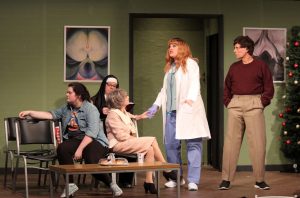 despondency of having her show cut short or canceled prior to opening, she felt the pain of all those thespians who had.
despondency of having her show cut short or canceled prior to opening, she felt the pain of all those thespians who had.
“We’re all family,” Danielle maintains. “In some ways, we’re closer than our biological families.”
As is the case with most area actors, Danielle goes to as 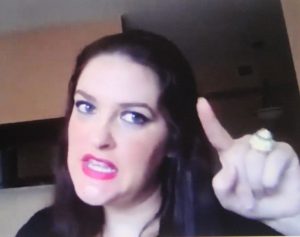 many shows as she can when she’s not in rehearsal or on stage.
many shows as she can when she’s not in rehearsal or on stage.
“The weekend after Cat on a Hot Tin Roof closed, I went to two shows to show my support for my friends who were in other productions. So although I didn’t have any more shows scheduled until Fall, it’s sad not having any shows to go to right now.”
Danielle was planning 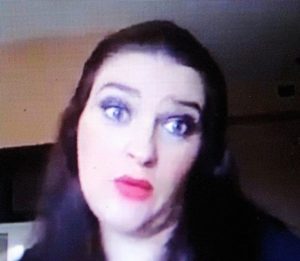 to take a little break following Cat on a Hot Tin Roof. She’d moved in September and still hadn’t unpacked a number of boxes and crates. She had an extensive “to do” list of other projects that also demanded her attention.
to take a little break following Cat on a Hot Tin Roof. She’d moved in September and still hadn’t unpacked a number of boxes and crates. She had an extensive “to do” list of other projects that also demanded her attention.
But in the aftermath of the theater closings, she immediately responded to Lab Theater’s virtual casting call for a reading of The Realish Housewives of Fort Myers. But while acknowledging that you do what you can  with the tools at your disposal, there’s a world of difference between a virtual reading and a live show.
with the tools at your disposal, there’s a world of difference between a virtual reading and a live show.
“There is nothing like the thrill of putting on a live show,” Danielle asserts. “Most of the artists I know in any form live for their art. You live for the thrill of putting on another show, and then another one. You 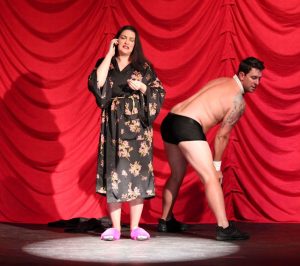 can’t get enough.”
can’t get enough.”
To be sure, there’s the individual pride and satisfaction that comes from delivering a good performance.
“I keep playing comedic roles, and there’s something about people laughing and enjoying a performance that’s unparalleled.”
A self-described roller coaster aficionado, Danielle gives assurances that neither Cedar Point’s Steel Vengeance, 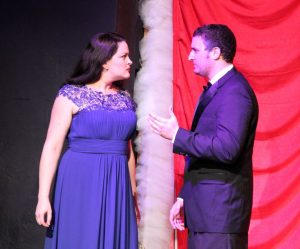 Six Flags’ Nitro nor Sea World’s Manta delivers thrills that come close to the spine-tingling sensations she gets from being on stage. But that’s because of the group dynamic involved in putting on a show.
Six Flags’ Nitro nor Sea World’s Manta delivers thrills that come close to the spine-tingling sensations she gets from being on stage. But that’s because of the group dynamic involved in putting on a show.
“You can’t put a price tag on that, on group artistry as a whole,” Danielle observes. “When you’re in a cast, it’s a group effort. Even with a one-person show, you still need the director, the crew, the sound and lighting techs. So it’s always 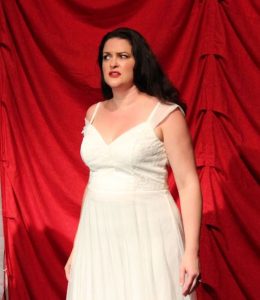 a group effort regardless of the size of the cast. It takes a village.”
a group effort regardless of the size of the cast. It takes a village.”
Delving deeper, Channell hits upon a phenomenon that has long intrigued psychologists and sociologists.
“When you have a group that consists of other amazing actors and directors, you learn from them, they give you advice based on their own experience and in the process you create this piece of art. I’ve never experienced anything like that [outside of theater].”
It’s called Collaborative Creativity.
Psychologist 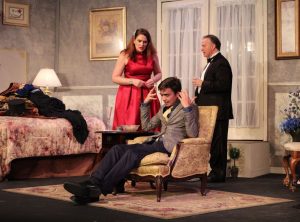 Bruce Tuckman first came up with the memorable phrase “forming, storming, norming, and performing” in his 1965 article, “Developmental Sequence in Small Groups.” He used it to describe the path that most teams follow on their way to high performance. [Later, he added a fifth stage, “adjourning” (which is sometimes known as “mourning”).]
Bruce Tuckman first came up with the memorable phrase “forming, storming, norming, and performing” in his 1965 article, “Developmental Sequence in Small Groups.” He used it to describe the path that most teams follow on their way to high performance. [Later, he added a fifth stage, “adjourning” (which is sometimes known as “mourning”).]
Theater works 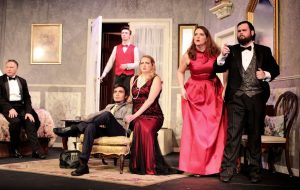 under tight timeframes, combines many individuals with different talents, and communicates a vision of the world with the intent to attract and transform its constituents. But historical examples in other realms also abound.
under tight timeframes, combines many individuals with different talents, and communicates a vision of the world with the intent to attract and transform its constituents. But historical examples in other realms also abound.
Once a sleepy rural village where farmers milked cows and vintners tended their grapes, the Parisian neighborhood of 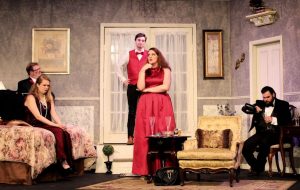 Montmartre gave rise in the late 1800s to Impressionism and Expressionism after a population of musicians, writers and artists that included Edgar Degas, Pierre-Auguste Renoir, Henri Toulouse-Lautrec and Vincent van Gogh took up occupancy in its old buildings and wandered its narrow streets. Living and working together on “the hill,”
Montmartre gave rise in the late 1800s to Impressionism and Expressionism after a population of musicians, writers and artists that included Edgar Degas, Pierre-Auguste Renoir, Henri Toulouse-Lautrec and Vincent van Gogh took up occupancy in its old buildings and wandered its narrow streets. Living and working together on “the hill,” 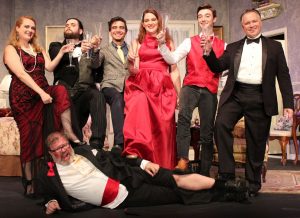 they generated a creative energy that served as a beacon for the rest of Europe.
they generated a creative energy that served as a beacon for the rest of Europe.
In the 1950s and ‘60s, the Dutch hamlet of Groenwijck in New Amsterdam transformed itself into a buzzing hive of artistic innovation and social change called Greenwich Village. Among the waves of dreamers and strivers lured to this bohemian lower Manhattan utopia 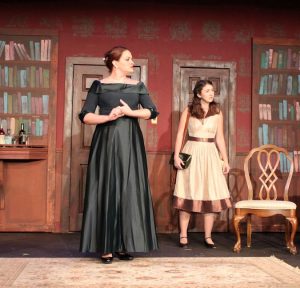 were writers Maya Angelou, James Baldwin, Truman Capote, Allen Ginsberg, Jack Kerouac and Rod McKuen; artists Robert Rauschenberg, Jasper Johns and Andy Warhol; and musical icons Bob Dylan, Joan Baez, Jackson Browne, Jimi Hendrix, Joni Mitchell, Carly Simon, James Taylor, Bette Midler, Liza Minelli, Barbra Streisand, Simon & Garfunkel and Peter, Paul and Mary.
were writers Maya Angelou, James Baldwin, Truman Capote, Allen Ginsberg, Jack Kerouac and Rod McKuen; artists Robert Rauschenberg, Jasper Johns and Andy Warhol; and musical icons Bob Dylan, Joan Baez, Jackson Browne, Jimi Hendrix, Joni Mitchell, Carly Simon, James Taylor, Bette Midler, Liza Minelli, Barbra Streisand, Simon & Garfunkel and Peter, Paul and Mary.
Bell Labs fostered Collaborative Creativity by purposely co-mingling researchers, 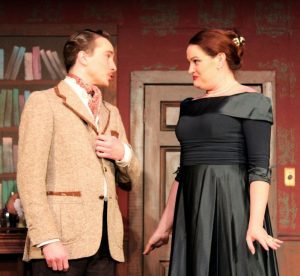 developers and theorists under one roof. As a result, Bell Labs produced life-altering inventions that included the transistor, laser, solar cells and radio astronomy.
developers and theorists under one roof. As a result, Bell Labs produced life-altering inventions that included the transistor, laser, solar cells and radio astronomy.
During his time as CEO of Pixar, Steve Jobs purposely designed the corporation’s headquarters with the bathrooms in a central atrium so that employees of every discipline would be compelled to see one another and interact throughout the day as they walked from office to common area and back again.
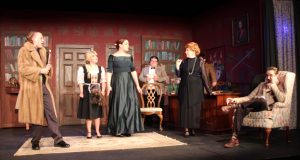 But today, few people enjoy the luxury of experiencing the group dynamic that gives rise to Collaborative Creativity. It’s certainly difficult if not impossible to achieve working in isolation from home.
But today, few people enjoy the luxury of experiencing the group dynamic that gives rise to Collaborative Creativity. It’s certainly difficult if not impossible to achieve working in isolation from home.
But once you do experience Collaborative Creativity, it’s something you 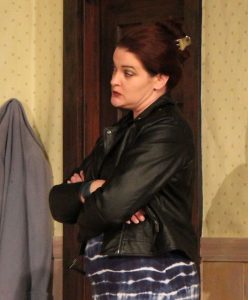 never forget and long to replicate.
never forget and long to replicate.
“It’s spectacular,” Danielle sums up in a word.
And a feeling of community ensues.
“When everyone works together to put on the best show to the best of our ability, a feeling of family results.”
In fact, it’s impossible not to be affected by the energy and group identity produced by Collaborative Creativity – not only for the cast and crew, but for the audiences who view the end product.
And that’s why 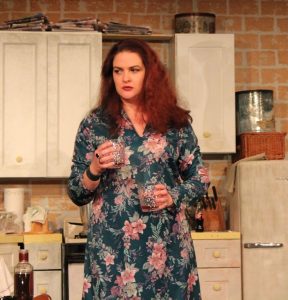 Danielle is clinging to the hope that theater will come back post-COVID-19 with renewed vigor and appreciation.
Danielle is clinging to the hope that theater will come back post-COVID-19 with renewed vigor and appreciation.
“I truly believe it will come back with a vengeance because people will want go somewhere and be entertained, when it is safe, of course. So I’m clinging to that hope and looking forward to the next production and the one after that.”
We all are.
Because there are just some things you can’t produce 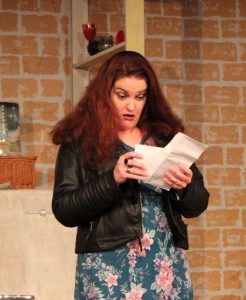 virtually.
virtually.
Like the energy and elan that comes with Collaborative Creativity.
May 4, 2020.
RELATED POSTS.














 Tom Hall is both an amateur artist and aspiring novelist who writes art quest thrillers. He is in the final stages of completing his debut novel titled "Art Detective," a story that fictionalizes the discovery of the fabled billion-dollar Impressionist collection of Parisian art dealer Josse Bernheim-Jeune, thought by many to have perished during World War II when the collection's hiding place, Castle de Rastignac in southern France, was destroyed by the Wehrmacht in reprisal for attacks made by members of the Resistance operating in the area. A former tax attorney, Tom holds a bachelor's degree as well as both a juris doctorate and masters of laws in taxation from the University of Florida. Tom lives in Estero, Florida with his fiancee, Connie, and their four cats.
Tom Hall is both an amateur artist and aspiring novelist who writes art quest thrillers. He is in the final stages of completing his debut novel titled "Art Detective," a story that fictionalizes the discovery of the fabled billion-dollar Impressionist collection of Parisian art dealer Josse Bernheim-Jeune, thought by many to have perished during World War II when the collection's hiding place, Castle de Rastignac in southern France, was destroyed by the Wehrmacht in reprisal for attacks made by members of the Resistance operating in the area. A former tax attorney, Tom holds a bachelor's degree as well as both a juris doctorate and masters of laws in taxation from the University of Florida. Tom lives in Estero, Florida with his fiancee, Connie, and their four cats.